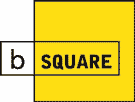Improved handling of intercompany processes using DataExpert from IGH (Pressure Group of the Data Network for Household Technology)
With DataExpert, the IGH (Pressure Group of the Data Network for Household Technology) has developed an open, flexible and low-cost infrastructure for intercompany data exchange in the Swiss household technology industry. DataExpert defines data standards for catalogue and business news and provides software components for data exchange. The implementation of DataExpert was concluded in October 2002 and DataExpert is now being used by the first companies. The members of the household technology industry are hoping to achieve cost and time savings as a result of more efficient handling of intercompany processes through the electronic exchange of data via DataExpert.
Table of Contents
1. The IGHHousehold technology industry
2. e-business in the household technology industry
Information systems, catalogue standard, partners
3. DataExpert integration solution
Business perspective, process view, SIA451, application view, methods, authentication, technical view, X.509 certificate
4. Implementation
Project management, internal integration
5. Operation
Maintenance, costs, benefits and profitability
6. Success factors
Changes, lessons learned
1. The IGH
Background:
The IGH (Pressure Group of the Data Network for Household Technology) was founded in 1994 by ten companies in the household technology industry. The goal of the association is to develop an improved infrastructure for cross-company data communication in the Swiss household technology industry. 68 dealers and manufacturers in the household technology industry and the Swiss-Liechtenstein building technology association suissetec are now members of IGH. The contributions model of the IGH consists of a one-off admission fee of CHF 8,000 and an annual subscription of CHF 4,000.
As a virtually totally member-financed association, the IGH sees itself as obliged to handle the resources at its disposal in a frugal manner. The currently five-strong management board works in an honorary capacity. The management and the tasks of the secretariat have been outsourced to Apex Solutions AG as mandates, so that only effective costs are incurred here too, depending on project tasks. Should, for example, additional personnel resources be required within the scope of projects, external project partners are called in.
The Swiss household technology industry:
The household technology industry consists of the main areas of plumbing, heating, ventilation, air-conditioning and electrical engineering. The sales volume on the Swiss market is over CHF 2.5 billion for the plumbing and heating segments alone. The industry is characterised by a three-pronged sales market with manufacturers, dealers and fitters. Without the electrical engineering sector, which has not been represented in the IGH so far, market events are currently determined at manufacturer level by approximately 20 companies. The manufacturers mainly sell their products via 60 large trading companies. The fitters, which number approximately 5,500 to 6,000 companies, are predominantly small companies. The fitters’ clients are mostly architects or planners who manage new building or refurbishment projects.
2. e-business in the household technology industry
Following the successful launch of a data standard for product catalogues in 1994, the IGH is implementing a solution for the electronic support of complete trading transactions with DataExpert.
Use of information systems in the household technology industry:
The use of IT in the household technology industry has increased sharply over the last few years. Manufacturers and dealers mainly use ERP systems. The majority of fitters and planners use sectoral software solutions which are tailored to the specific needs of these enterprises. The four largest sectoral solution providers with suissetec (trade association) accreditation have a market share of approximately 80% of the total market.
Around a third of IGH members (manufacturers and dealers) have set up Internet shops, although these only generate a very small percentage of sales. This is especially due to the non-integration of customers in internal application systems. If offers are obtained by different dealers, numerous entries in the shop front-ends of the various providers are required.
The majority of the IT solutions currently in circulation in the industry are restricted to the support of in-house processes. Business processes are rarely integrated outside corporate borders.
The IGH catalogue standard Win_Expert
Until the mid nineties electronic data communication in the household technology industry was only carried out in isolated cases. Catalogues were predominantly paper-based and cross-company communication was conducted by telephone or fax. The various trade solutions applied by fitters used proprietary catalogue formats. The conversion of product catalogues into these proprietary formats represented an additional source of business for software houses.
In order to accelerate the acceptance of electronic product catalogues, IGH developed the catalogue data standard Win_Expert in its founding year 1994. As the software houses had an additional income from converting catalogue data into proprietary formats, they were initially reluctant to integrate the Win-Expert standard. However, to ensure that the catalogue standard took off, IGH developed an additional application system which facilitates access to catalogues in the Win_Expert standard. To-date, this Win_Expert system is provided by IGH for free.
The wide acceptance of Win_Expert led to the accredited software houses integrating the Win_Expert catalogue formats into their sectoral solutions in 1998. In return, IGH stopped developing the Win_Expert system. Nevertheless, this is still being used in some small fitters’ enterprises. In 2002, 3,900 companies with approximately 90% of the total turnover for the industry were using the Win_Expert catalogue format. At present, over 110 IGH catalogues are available in German, French and Italian.
Process integration with the IGH DataExpert solution
At the end of the nineties, individual dealers and manufacturers initiated initial projects for cross-company data exchange. Encouraged by these initiatives, the IGH decided to develop an industry-wide integration solution in 2001. It was crucial to start the development quickly, as large investments in bilateral solutions would have hampered the launch of an industry-wide solution. The resulting DataExpert solution, which was completed in October 2002, is presented below. DataExpert supports the handling of complete trading transactions and can be used between both fitters and dealers and between dealers and manufacturers.
Partners:
DataExpert was implemented in cooperation with bSquare and ZĂĽhlke Engineering AG.
bSquare
bSquare is a Zurich-based company which has two employees and was founded in 2001. bSquare supports companies with IT projects in the B2B sector. They specialise in conception, design and project management, and in some cases special components are also implemented. A key feature is the intercompany integration of existing IT systems of SMEs. Normally, the company enlists the services of specialised and highly qualified experts from companies such as BBV, Skybow, Trivadis and ZĂĽhlke Engineering.
bSquare managed the conception and design of DataExpert, played a key role in drafting the specifications, organised communication between the parties involved and managed the project during the implementation phase.
ZĂĽhlke Engineering AG
ZĂĽhlke Engineering AG was founded in Zurich in 1968. In the last few years, branches have also been set up in Basle, Frankfurt and London. The company has over 200 employees and offers consultancy, development and implementation in the fields of business engineering, process engineering, product engineering and software engineering. ZĂĽhlke was involved in the conception of DataExpert and implemented the system inclusive of supporting installation routines.
Choice of partners
As none of the approximately twenty software solutions which were initially investigated satisfied the specific requirements of the household technology industry, IGH decided to develop its own solution. Nine software companies were invited to submit a realisation concept. These also included bSquare, who had come to the attention of IGH through contacts with the University of Zurich. The concept of bSquare was best suited to the requirement profile defined by IGH. bSquare recommended ZĂĽhlke Engineering as an implementation partner.
3. DataExpert integration solution
DataExpert provides integration components for intercompany data exchange. The system can be used for communication between both fitters and dealers and between dealers and manufacturers (see Fig. 3.1).
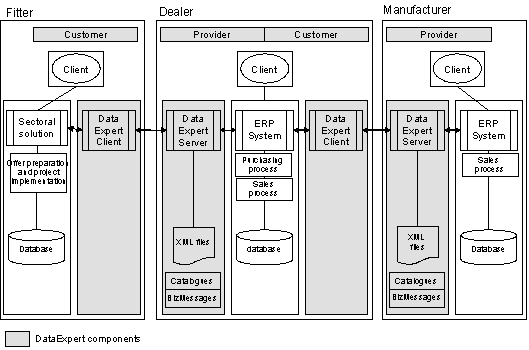
Fig. 3.1: Integration with DataExpert
DataExpert is based on a customer-based client component and a provider-based server component. DataExpert transports data between the trading partners and the order is still processed in the sectoral solutions or ERP systems of trading partners.
Business perspective:
The three-pronged sales market with manufacturers, traders and fitters plays a key role in the household technology industry. The manufacturers produce the products required on the market and provide detailed technical product information. Dealers also play a key role, as the high number of fitters places considerable demands on logistics and customer care. Due to geographical proximity and long-standing contacts, many fitters have built up permanent links with dealers. A change in the roles and functions of the individual players through the solution is so far unforeseeable.
Process view:
In an ideal world, a project in the household technology industry usually starts with a call for tenders with respect to a new building or refurbishment project by an architect or planner. As the next step, one or several fitters’ enterprises prepare a bid as a rule. If need be, these companies access information from the appropriate product catalogues and often already obtain offers from dealers. If a fitter is awarded the contract by the planner, it submits an order to the dealer in question and then receives an order confirmation. When the order is called up for delivery, the fitter finally receives a delivery note and an invoice. The entire process is shown in Fig. 3.2.
As a rule, dealers and fitters exchange the messages stated in Fig. 3.2. Individual messages, such as the order call-off, may be omitted depending on the situation. Traditionally only fax, telephone or letter are used to communicate. Thus, media breaks occur, which lead to high processing costs, reduced data quality and long throughput times due to multiple entries, increased error probability and time-wasting.
DataExpert rectifies these inefficiencies by defining standards for all stated business messages and their electronic exchange. The process sequence is not changed by DataExpert. The roles of provider and customer are laid down in such a way that the system can be used between both fitter (customer) and dealer (provider) and between dealer (customer) and manufacturer (provider).
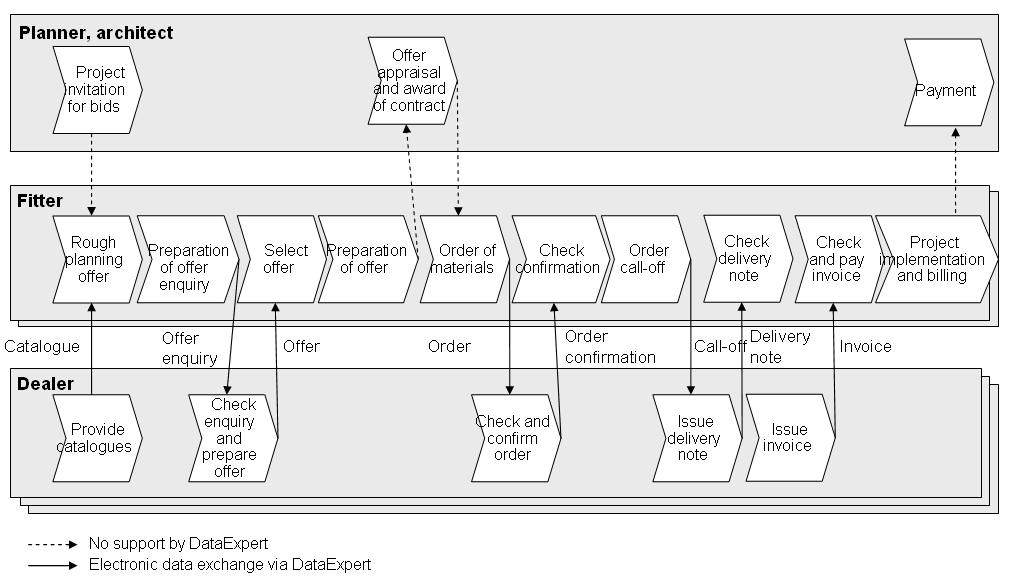
Fig. 3.2: Transaction steps between fitter and dealer
The data exchange between planner/architect (customer) and fitter (provider) is handled using SIA451 and not via DataExpert. SIA451 is a data format recommendation from CRB (Swiss Head Office for Building Rationalisation) for specifications and bids in the building industry.
Application view:
DataExpert is largely based on the existing system components. The actual order processing operation and data storage are still carried out in the sectoral solutions or ERP systems. These systems communicate with the DataExpert components implemented at providers’ and customers’ premises. DataExpert carries out the validation and transfer of documents. A possibility for interplay between DataExpert and providers’ and customers’ application systems is shown in Fig. 3.3.
DataExpert consists of a server component which is installed at providers’ premises and a client component which is installed at clients’ premises, thereby creating a decentralised client server architecture where customer and provider can communicate with each other directly. A third party is not integrated into the transaction process.
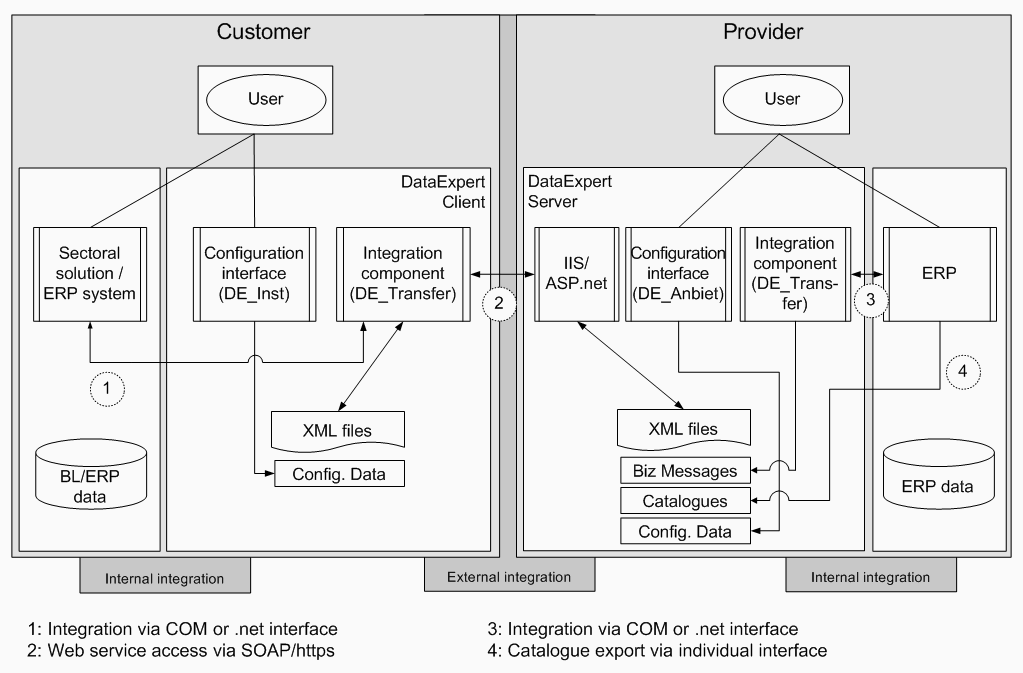
Fig. 3.3: Internal and external integration for use between customer and provider
Communication is based on Web services which are installed at the provider’s premises on a Microsoft IIS web server with ASP.net. The main client-based element is the method library DE_Transfer, which validates documents and calls up web services. DE_Transfer can be addressed via .net or COM? interfaces from the client’s application systems. DE_Treansfer provides the following methods for client applications:
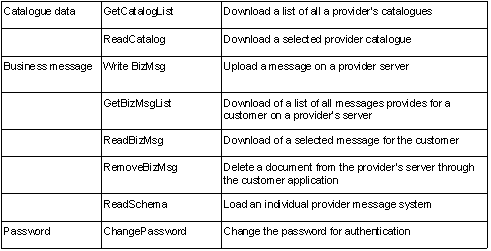
The WriteBizMsg method is called up to send a message to a provider. The message is transferred in XML format from the application to DE_Transfer. DE_Transfer validates the message and calls up the web service of the corresponding provider via SOAP (Simple Object Access Protocol). The message is stored in the server’s upload directory under a clear file name assigned by DataExpert .
To receive messages from a provider, a list of all messages which exist in the server’s download directory and are addressed to the relevant customer is first of all requested with the GetBizMsgList method. The list is transferred in XML format to the user’s application. By calling up the ReadBizMsg method, a specific message is then downloaded and also transferred to the customer application in XML format.
The DE_Transfer is also used by the provider in addition to the IIS web server and web services. Here it is used to read out the messages received from the web server’s upload directory and to file outgoing messages in the download directory.
Authentication:
DataExpert is designed in such as way as to only allow customers to initiate a data transfer. Whenever a method is called up, both the customer’s and provider’s identity is authenticated
When calling up a dataExpert method by means of a customer application, verification is first carried out based on the DataExpert client’s configuration file. User name and password as well as the user’s rights are automatically checked by the client. When the web services are then called up by the provider, an XML stream is transferred to the server, which contains customer ID and password. Before a customer’s message is saved on the server or a provider’s message is sent, identity and authorisation of the customer are checked by the server.
The administration of user and partner data is possible via special interfaces, via which configuration data can be accessed.
XML data standard
As none of the analysed standards fulfilled the requirements of IGH, its own SML system was defined for the DataExpert catalogues and business messages. The DataExpert catalogue standard is based on the Win_Expert catalogue standard and supplements this with additional product information. Providers are given the possibility to adjust the SML message system to a certain extent, with a few exceptions, in that data fields can be declared either as mandatory fields or optional fields. The system can load customer applications via the ReadSchema method.
Technical view:
Fig. 3.4 shows a possible system architecture for DataExpert. The web services are called up on the provider’s server via SOAP (Simple Object Access Protocol). If an X.509 certificate is available on the provider’s server, the SOAP messages can be transferred via an encrypted https connection. The X.509 certificate contains the provider’s PublicKey and information about the supported encryption process. By installing firewalls, the integrity of application systems is guaranteed.
The deployed .NET technology restricts the operating system environment to Windows systems. Owing to the dominance of Windows systems in the household technology industry, this is not seen as a problem and has tended to make integration into the existing system environment easier.
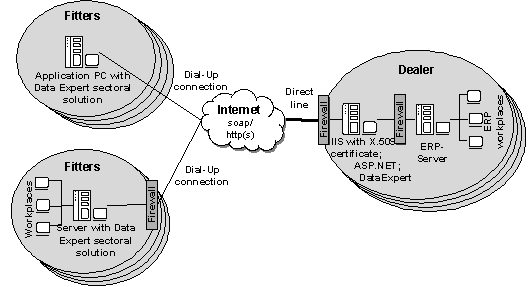
Fig. 3.4: Example of the system architecture of the DataExpert solution
As far as hardware is concerned, the client requires a Pentium 90 and at least 96 MB RAM. For the server, a Pentium 133 with at least 256 MB RAM is recommended. As DataExpert only provides communication and integration components, differing hardware requirements may exist due to the sectoral solutions or ERP systems used.
4. Implementation
The implementation of DataExpert could be carried out within the predefined time and cost frame.
Project management and redesign of processes:
From May to December 2000, IGH examined solutions which were already available to check their suitability for the household technology industry. As no suitable solution was identified, IGH developed a rough concept to develop its own solution from January to April 2001. In the following months, this was refined in cooperation with manufacturers, dealers and software providers. In autumn 2001, IT companies were requested to submit a realisation concept. The implementation phase began at the start of 2002 and was completed in October 2002.
DataExpert does not set any parameters for the operation of intercompany processes. All existing process variants are therefore supported. Buyers and providers can agree individually which DataExpert messages are to be exchanged within the scope of a transaction.
As IGH developed a second catalogue standard with DataExpert in addition to Win_Expert, a converter was implemented which allows the transformation of DataExpert catalogues into Win-Expert catalogues and vice versa. Thus, providers do not have to support both catalogue standards at the same time. As the DataExpert standard is more comprehensive than the Win_Expert standard, some information is lost during conversion to Win_Expert.
Implementation and internal integration:
The time required for the tasks undertaken by bSquare came to approximately 50 man-days. Pure implementation of the client and server components by ZĂĽhlke Engineering required a further 27 man-days, of which 7 days were spent on developing a prototype and a further 20 days on implementing the productive system.
Internal integration with the sectoral solutions or ERP systems is carried out in different ways depending on the trading level.
At fitter level, it is planned to integrate DataExpert functionality in the sectoral solutions of software houses. In addition to integration interfaces, modules must be developed for processing DataExpert business messages. Four accredited providers of sectoral solutions, including the three largest, have already started implementation. The work is to be completed by the beginning of 2004, so that DataExpert will then be available to the majority of fitters.
In the case of dealers and manufacturers, integration will have to be carried out individually. Four companies have already started to implement the required functionality, and a further 15 have announced the integration of DataExpert components. It is foreseeable that approximately half of these companies will not commence implementation before 2004.
5. Operation
Maintenance:
Owing to the underlying decentralised client server architecture, only customers and providers are integrated into maintaining the DataExpert infrastructure; system operation can be organised by companies individually. Integration of DataExpert components into the sectoral solutions and their installation at fitters’ premises is also carried out by the software companies. On the other hand, in the case of dealers and manufacturers, individual integration solutions are used for the ERP systems, whereby comparatively high maintenance costs may be incurred in addition to the initial expenses for implementation.
Costs, benefits and profitability:
Implementation of the DataExpert client and server components could be carried out within the predefined time frame. The costs of less than CHF 400,000 were 5% below the predefined budget. Extra multilingual versions of the configuration data interfaces and the DataExpert error notifications will be provided by the start of 2004. The additional costs incurred for this will be approximately CHF 15,000. All DataExpert components are made available to customers and providers for free.
Fitters may incur costs for procurement of additional modules which communicate with DataExpert. Depending on the software house, these are provided free of charge or cost up to around CHF 1,500. The anticipated costs for individual integration by providers are estimated to be between CHF 10,000 and 20,000. Investments for the web server infrastructure may also be required, which will come to between CHF 5,000 and 8,000, and maintenance costs for an Internet connection.
Benefit potential lies on the one hand in the fact that media breaks no longer occur, as multiple entries are not longer necessary. At the same time, data quality increases due to the elimination of error sources. The electronic transfer may lead to a reduction in process running times, thus creating greater flexibility and improving reaction possibilities. Other potential arise, for example, through the detailed electronic catalogues, with which product information can be efficiently communicated. The extent to which this potential is exhausted and the amount of benefit derived by individual trading levels depends on various factors, such as the acceptance and type of usage of DataExpert.
For IGH, a profitability calculation is not a prime consideration as they do not, as an association, pursue any internal profitability objectives. The IGH estimates that contributions to the profitability of individual companies will be visible in two to four years.
6. Success factors
DataExpert is an integration solution which stands out due to its extreme flexibility, low operating costs and the fact that it is based on existing systems.
Changes:
As DataExpert has not been fully deployed as yet, it is not possible to make any statements about the ultimate implications of the system. The speed of integration and introduction has actually lagged behind the expectations of IGH. It was expected that twelve months after completion, 50% of IGH members would already be using the full transaction support package. Initially there was, however, the problem that manufacturers, dealers and software houses were waiting for initial DataExpert implementations by other parties in order to avoid false investment. In particular, the four largest manufacturers of sectoral solutions, which together cover 80% of the market, play a key role here. Following individual pioneering implementations by manufacturers and dealers, four sectoral solution providers (including three of the large providers) have announced, as mentioned above, that they will be integrating DataExpert into the next released version. For most providers, this normally takes place in the spring of each year .
The IHG is calling for the acceptance of DataExpert by means of publications in relevant trade journals and the compilation of information material. Joint conferences with software houses are planned for fitters in the first quarter of 2004, at which the DataExpert integration of sectoral solutions will be demonstrated.
The potential of DataExpert is reflected in the interest of other industries. Within the framework of a CRB project (Swiss Central Office for Building Rationalisation) to improve tendering procedures, talks have already been held with respect to the adoption of DataExpert standards. Thus, there may be a possibility to use DataExpert as a means of communication between fitters and planners. As regards the lighting industry, an important faction in the electrical engineering sector has indicated a serious interest in DataExpert.
Lessons learned:
The success of an industry-wide integration solution such as DataExpert largely depends on the extent to which they are compatible with the corporate strategies of the parties involved. In the case of DataExpert, manufacturers, dealers and software companies (who also represented fitters) were included in the development process at an early stage. DataExpert offers trading partners sufficient adjustment possibilities to individual corporate conditions and strategies, as the system does not prescribe any definite process operations, but rather supports the efficient handling of various process variants through a clearly defined record of electronic messages. The system complements the various sectoral solutions instead of trying to replace them, so that with the software houses important partners could be won.
Costs are also important to ensure acceptance by trade members. Investments which are already made in bilateral solutions may have negative effects on the acceptance of a sectoral solution, which is why the development of DataExpert was rushed through. High procurement costs are avoided, as DataExpert largely utilises the existing system components, thus ensuring that training costs were kept to a minimum. The operating costs are comparatively low, as the IGH as a non-profit-making association does not charge any use or licence fees and no third parties are involved in communication. The resulting direct communication policy also meets the requirement of manufacturers and dealers who wanted to avoid any data falling into the hands of third parties.
The fact that the launch of this solution has not met expectations can be put down to various factors, such as investment risk, the economic situation and release cycles of sectoral solutions. Initial partial implementations of DataExpert functionalities by manufacturers and dealers had an important signalling effect on other IGH members and sectoral solution providers.



